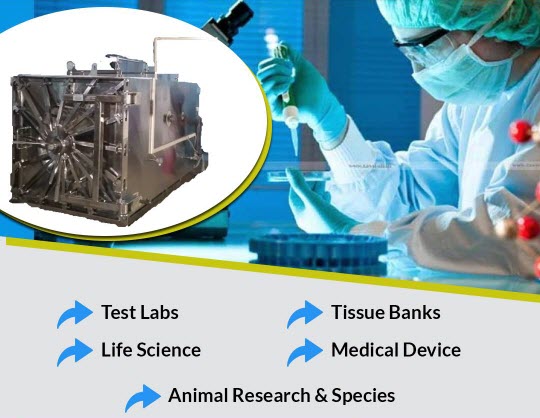In laboratory settings, maintaining a sterile environment is crucial to ensure the reliability and accuracy of experiments and research. Sterilization protocols play a pivotal role in achieving this goal. This article delves into the world of laboratory sterilization, discussing the significance of adherence to guidelines and compliance with regulatory standards.
Understanding the Significance of Sterilization in Laboratories
Laboratories, whether in the fields of medicine, microbiology, or chemistry, handle a wide range of materials and equipment that must remain uncontaminated. Contaminants can lead to compromised results, inaccurate data, and potential safety hazards. Sterilization is the process of destroying or removing all forms of microbial life, ensuring that laboratory instruments, surfaces, and materials are free from harmful microorganisms.
Challenges in Laboratory Sterilization
3.1 Variability in Sterilization Methods
One challenge in laboratory sterilization is the wide variety of materials and equipment that require sterilization. Different items may need different sterilization methods, such as autoclaving, chemical disinfection, or dry heat sterilization. The variability in methods can be overwhelming and necessitates a clear understanding of what works best for each item.
3.2 Ensuring Complete Sterilization
Another challenge is the assurance of complete sterilization. Even with the right method in place, it can be challenging to ensure that all microorganisms are eliminated. Inadequate sterilization can have serious consequences, particularly in laboratories working with hazardous or pathogenic materials.

Guidelines for Effective Laboratory Sterilization
4.1 Selection of Appropriate Sterilization Method
To overcome the challenge of variability in sterilization methods, laboratories must have a well-defined protocol for selecting the appropriate method for each item. This involves considering the nature of the material, its intended use, and the presence of heat-sensitive components.
4.2 Proper Handling of Sterilization Equipment
Proper handling of sterilization equipment is critical. Autoclaves, ovens, and chemical disinfection systems must be operated by trained personnel to ensure the effectiveness of the sterilization process. Regular maintenance and calibration are essential to keep the equipment in optimal condition.
4.3 Monitoring and Validation
Monitoring the sterilization process is key to ensuring complete sterilization. Laboratories should implement validation processes, which involve the use of indicators and regular checks to confirm that the sterilization conditions are met and maintained.
Compliance and Regulatory Standards
5.1 FDA Regulations
In the United States, laboratories that handle medical devices must comply with FDA regulations on sterilization. These regulations provide guidance on sterilization validation, ensuring that medical devices are safe and effective for use.
5.2 Laboratory Accreditation
Laboratory accreditation bodies, such as the Clinical Laboratory Improvement Amendments (CLIA) in the U.S., have strict guidelines for quality control and sterilization. Compliance with these standards is necessary to obtain and maintain laboratory accreditation.
Benefits of Strict Sterilization Protocols
Adherence to rigorous sterilization protocols brings several benefits to laboratories. These include:
- Accurate and reliable results: Sterile conditions ensure that experimental outcomes are not influenced by contamination.
- Safety: Preventing contamination protects laboratory personnel from potential hazards.
- Regulatory compliance: Meeting regulatory standards is essential for the legality and credibility of laboratory work.
- Reduced experimental errors: Proper sterilization reduces the risk of errors caused by contaminants.
Conclusion
Laboratory sterilization is an indispensable component of scientific research and experimentation. Challenges such as variability in methods and ensuring complete sterilization can be overcome through strict adherence to guidelines and compliance with regulatory standards. By doing so, laboratories can uphold the quality, safety, and integrity of their work.
FAQs
1. Can I use the same sterilization method for all laboratory equipment?
- No, the sterilization method should be selected based on the nature of the equipment and materials being sterilized.
2. How often should laboratory sterilization equipment be calibrated and maintained?
- Regular calibration and maintenance should be carried out as recommended by the equipment manufacturer and according to laboratory protocols.
3. Are there international standards for laboratory sterilization?
- Yes, there are international standards, but compliance may vary by region and type of laboratory.
4. What is the role of sterilization validation in laboratory protocols?
- Sterilization validation ensures that the sterilization process consistently meets the required conditions for effectiveness and safety.
5. How can I stay updated on the latest sterilization guidelines for laboratories?
- Regularly check with relevant regulatory agencies and accrediting bodies and stay informed about industry best practices.
In the world of scientific exploration, the maintenance of sterile conditions is essential. Following strict sterilization protocols and adhering to regulatory standards not only ensures the credibility of laboratory work but also contributes to safer and more accurate scientific advancements.





